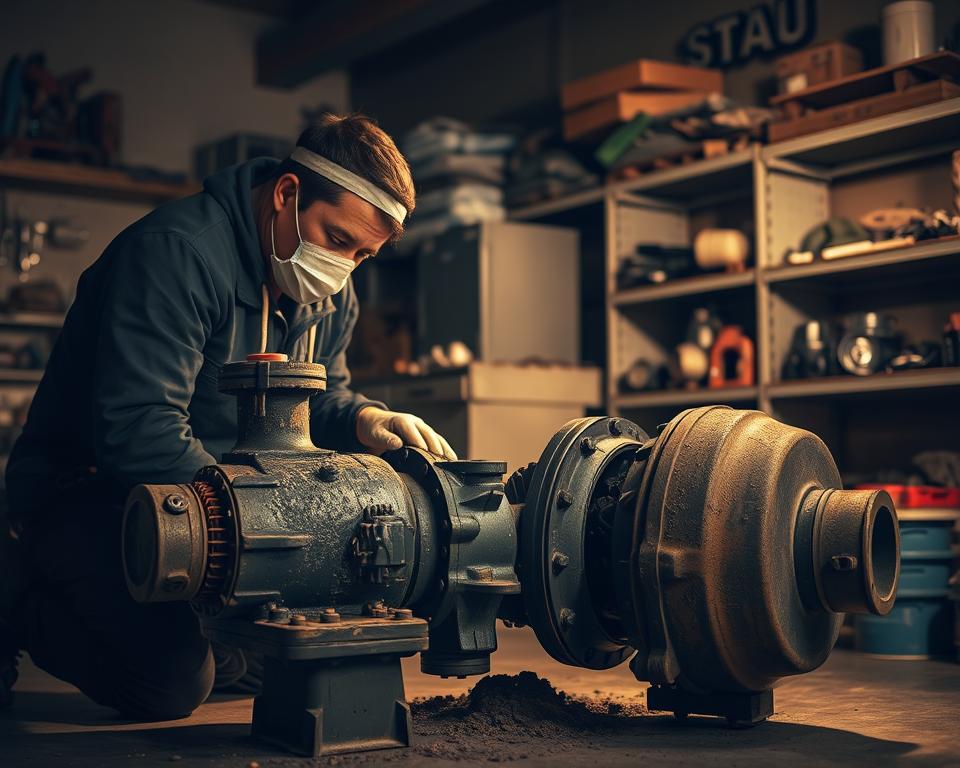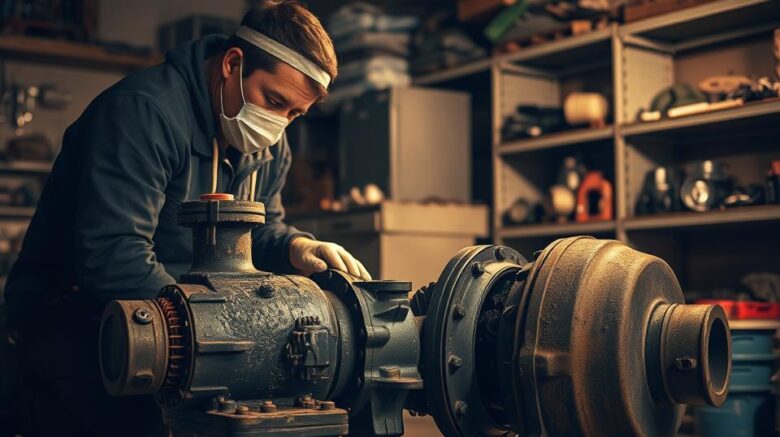Camper Water Tank plus Pump: – Complete Handbook
Looking to learn what keeps your road trips running without a hitch? It’s largely thanks to your RV water Tank and Pump. Be it bound for the national-park circuit or a quick weekend retreat, commanding your RV’s water system is vital. This article we unpack the must-knows: the parts, upkeep, and tips for smooth travel. Grasping each element, from the plumbing network to Tank filling, guarantees water is always available during your journeys – trailer septic tank pumping.
Noteworthy Lessons
- Knowing the RV water system enhances your travel enjoyment.
- The RV fresh-water Tank & Pump are central for a steady water supply.
- Consistent maintenance extends the longevity of your RV plumbing.
- Knowing how to fill your reservoir properly can avert future issues.
- Diagnosing your water Pump can spare you unexpected problems.
Demystifying RV Water Systems
RV water systems are split into two primary parts: the potable-water setup and the grey/black-water mechanism. The fresh side boasts several core components like the water Tank, pressure Pump, and faucets, echoing household plumbing while catering to the dynamic needs of living on the move.
Supplying clean water is paramount for the system’s performance. It safeguards the safety of all passengers. It’s important to keep the RV plumbing in prime condition through routine maintenance – such as proper drainage to avoid leaks and other issues. Timely inspections let RV enthusiasts avoid water-related mishaps during their journeys.

The Importance of the RV Water Tank
The RV fresh-water reservoir is indispensable for a successful journey. It holds the fresh water needed for drinking, cooking, and cleaning. The size of this container changes with each RV model, determining how much water can be stored – and has a direct bearing on how long you can roam before requiring a refill.
Keeping the RV storage Tank hygienic is critical. Regular cleaning wards off dangerous contaminants, so the water stays safe for use. Skipping maintenance can encourage bacteria or algae growth, making the water hazardous.
Understanding the RV Tank’s role streamlines water management during trips. Diligent upkeep and frequent refills deliver a stress-free experience. It’s crucial to have ample water for all travel needs, guaranteeing a trouble-free RV adventure.
How to Fill Your RV Fresh-Water Tank
Filling your RV water Tank demands careful action to guarantee it’s done correctly. There are two primary methods: gravity filling and pressure filling. Understanding these methods greatly improves your RV water routine.
Gravity filling is straightforward. You just need a food-grade water hose. Hook up this hose to a water source, then to the Tank’s opening, and let gravity handle the fill. Be sure to watch the water level to avoid spills.
Pressure filling involves a city water connection, which is faster fill times. You must use a pressure regulator to control water flow. Attach the hose from the municipal source to your RV. This approach ensures quick and consistent supply to your Tank.
Choosing approach you use, remember these vital safety tips: Consistently monitor the Tank when filling to prevent overflow, and draw only safe water to ward off health issues. Mastering these filling and safety techniques will render your RV trips even more enjoyable.
RV Water Tank and Pump: Parts in Focus
The RV water Tank and Pump are vital to any RV’s plumbing system, ensuring a steady and smooth water supply for all your needs. The RV water Pump’s main job is to draw water from the reservoir, so clean water is always ready. That’s vital for cooking, cleaning, and showering.
RV plumbing features different Pump types, each with individual benefits. Diaphragm pumps are favoured for their consistent water pressure, while centrifugal models are prized for ease and energy thrift. It’s important to weigh flow rate, noise, and installation ease when selecting your Pump.
To sum up, the RV Tank-Pump pair are irreplaceable to your water system’s functioning. A reliable Pump secures strong pressure and smooth flow, enhancing your overall travel experience.
Selecting the Best-Fit RV Pump
Finding the ideal RV water Pump is vital for your water system’s best performance. When evaluating a Pump, factoring in various points is critical for a satisfying camping experience. Ensuring it pairs with your RV’s water system is key.
Keep these important aspects in mind:
- Flow Rate: Choose a Pump with a flow rate that meets your usage needs. A higher flow means faster reservoir refills.
- Pressure Ratings: Your RV’s different fixtures set the needed pressure levels. Go with a Pump whose specs satisfy those figures for smooth operation.
- Noise Levels: Noise can be an issue with some Pumps. For peace and quiet, contrast models for their noise output.
Brands like SHURflo and VEVOR are high on the list for many RVers, and they offer distinct advantages. A thoughtful assessment of these brands will help your selection process.
Grasping these factors is not only crucial for the right purchase but also arms DIY owners with essential know-how for upkeep and replacements.
Using City Water for Your RV
Connecting your RV to city water provides an effortless supply of fresh water, freeing you from just using your Tank. This delivers a more comfortable camping experience. Be sure to follow safe steps for a successful hookup.
First, find the city water connection port on your RV. It’s usually marked by a white or black connector, sometimes tagged for ease. Grab a potable water hose designed for RVs; this type of hose keeps your water safe from contaminants.
It’s critical to attach a pressure regulator before making the connection. This gadget protects your plumbing by moderating the water pressure. With the regulator in place, link the hose from it to the water source.
Once connected, keep an eye on the water pressure. Maintain a steady, gentle flow to avoid hose damage. Check your hoses regularly for any wear or leaks and quickly replace parts as needed.
Sticking to these steps for city hookup improves your camping convenience and assists in maintaining your RV’s condition.
Looking After Your RV Fresh-Water Tank
Keeping your RV’s fresh-water reservoir is properly maintained is vital for fresh, healthy water while travelling. A clean Tank avoids bacterial growth and contamination. For starters, periodically sanitise the Tank: mix water with a bit of bleach for an efficient residue-free clean.
It’s crucial to check leaks and manage Tank pressure. Routine checks can spot problems early, sparing expensive fixes. A maintenance routine maintains the water system in prime condition.
For optimal maintenance, use a checklist:
- Check water levels and quality often.
- Sanitise the Tank bi-annually with a bleach solution.
- Inspect for leaks in the Tank.
- Monitor Tank pressure and Pump function.
- Flush the Tank to clear any sediment buildup.
RV Water Pump Troubleshooting
RV water Pump glitches can be frustrating, upending travel plans in a flash. Facing strange noises, experiencing low pressure, or facing complete Pump failure are frequent problems. Understanding how to troubleshoot them can greatly enhance your trips.
If you hear odd sounds from your Pump may signal a problem. First step : check for loose connections and secure them. When confronted with low water pressure, inspect hoses and fittings for leaks. Because a small leak can greatly affect flow, early troubleshooting is critical.
If your Pump stops completely, check electrical connections. Begin by examining the Pump’s fuse. If the fuse is fine, continue diagnosing for wear or damage.
A methodical approach identifies and fixes water system issues. Regular maintenance and inspection ensure easier journeys.
| Issue | Possible Cause | Suggested Solution |
|---|---|---|
| Strange Noises | Loose connections | Tighten fittings |
| Low Pressure | Leaky hoses/fittings | Find & seal leaks |
| Pump Failure | Electrical fault | Check fuse/wiring |
| No Water Flow | Blocked lines | Flush obstructions |
Best Practices for Effective RV Water Use
Travelling in off-grid areas typically entails limited water access. Efficient use in your RV is key. By embracing smart conservation tactics, you don’t just manage resources well but also boost camping satisfaction.
To make the most of water while travelling, consider these tips:
- Take shorter showers – aim for under five minutes.
- Install water-saving fixtures like low-flow showerheads and faucets.
- Reuse grey water: dishwater can flush toilets or water plants.
- Monitor reservoir levels regularly to avoid overflow.
- Plan water stops in advance: know filling stations along your route.
Conclusion
Understanding the ins and outs of your RV water systems is central to a fulfilling travel adventure. The water Tank & Pump remain at the centre of this, needing regular upkeep. By maintaining these systems, you ensure a dependable supply and dodge potential snags.
Diligent troubleshooting and checks limit stress and spare time. Being proactive about upkeep is essential, especially when you’re miles away from help. Proper care allows you to maximise water use, enhancing comfort for everyone.
As you set off, leverage this guide to master your RV’s water systems. Making informed choices about plumbing and equipment prepare you to enjoy the freedom of the road. Enjoy joyous and smooth travels ahead!
